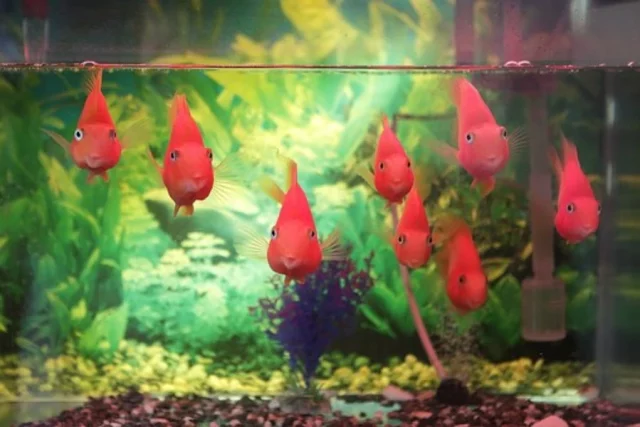Did you know that water contains chlorine, chloramines, and traces of other chemicals? These chemicals are harmful to aquatic life and your fish’s health. A Reverse Osmosis Deionization (RODI) system is a one-step process that removes all the impurities from the reef tank. So why does a RODI system make a difference? Reading this article will learn about several reasons why an aquarium needs a RODI system.
What Is A RODI System?
RODI is an acronym that stands for “reverse osmosis, deionization.” It is a water purification system used to produce clean water for residential and commercial applications. The RODI system comprises three main parts: the reverse osmosis unit, the deionization unit, and the pressure tank. If you’re a fish enthusiast, you probably need to buy a RODI unit tоo maintain the quality of your aquarium’s water. A RODI unit will help remove all thе impurities from your reef tank, including chlorine, chloramines, and heavy metals. It will help keep your fish healthy аnd thriving.
Filtering Tank Water
Water contains large amounts of contaminants, including but not limited to heavy metals, pharmaceuticals, agricultural run-off, chlorine and chloramine compounds, etc. The RODI system filters these contaminants by forcing the water through a fine sediment filter. The sediment filters contain tiny pores to trap solid particles such as dirt, debris, and rust from the water allowing only pure minerals to pass through. When the sediment filter traps contaminants, it is called mechanical filtration.
Removing Pharmaceuticals
Pharmaceuticals are chemicals given to people to treat diseases and illnesses. However, some pharmaceuticals can cause harm when used in high dosages. For example, Chloramphenicol has been banned in aquarium fish because large doses have been known to kill fish. Furthermore, many other medications contain harmful chemicals that can be detrimental if absorbed by your aquatic life. The RODI system removes these pharmaceuticals bypassing the water through a carbon block filter. The carbon block filter contains millions of tiny pores that trap impurities such as metals, chemicals, and odors dissolved into the water. When the carbon block filter traps contaminants, it is known as chemical filtration, an essential aspect of providing a healthy fish tank environment.
Removing Trace Contaminants
Many trace contaminants such as fluoride, arsenic, uranium, and other trace minerals exist in the drinking water supply. The RODI system uses an ultrafiltration membrane to remove these trace contaminants from water before supplying aquarium inhabitants with clean, mineralized water. An ultrafiltration membrane passes only water molecules of solvent through the pores while trapping contaminates. Contaminants are trapped by the ultrafiltration membrane, known as adsorption filtration.
Removing Chlorine And Chloramine Compounds
Chlorine compounds are used to treat water to kill any harmful bacteria. Chlorine is added to the water every time a new water supply comes into contact with the old supply, such as when a new tank is connected or when visiting another city. Unfortunately, chlorine can be seriously detrimental if absorbed by your aquatic life. Not only does it irritate gills, but it also causes damage to tissue and even death in larger doses. The RODI system removes chlorine by passing water through an RO (Reverse Osmosis) membrane.
Removing Heavy Metals
Heavy metals such as copper, lead, and mercury can cause damage to your aquatic life if absorbed in large doses. The RODI system removes heavy metals using a cation cartridge which passes water through tiny beads containing resins. Heavy metals are trapped by the resins, known as adsorption filtration. Furthermore, every time you cycle your aquarium or change out livestock, you must use a dechlorinator or remove any trace of chlorine before adding new fish to your tank to prevent immediate health problems during cycling. That is why it’s essential to use the best possible water conditioner on your tank if you want healthy fish.
Removing Salt Impurities
The process of removing salt impurities is known as desalination. The problem with salinity in our aquariums comes from either overdosing salts such as Instant Ocean Reef Crystals, however saltwater fish and corals also produce valuable nutrients such as calcium and magnesium, which need to be replenished. That is where marine aquariums can become problematic because not only does saltwater contain valuable trace minerals, but it also contains harmful chloride ions that cause corrosion. Manufacturers and hobbyists alike believe this heavy concentration of chloride ions causes metals such as copper, lead, and zinc to dissolve, which can be harmful if absorbed by your aquarium inhabitants. The RODI system absorbs these chloride ions with a RO membrane known as adsorption filtration.
Removing Arsenic
Arsenic is commonly found in the drinking water supply coming from natural sources deep within the earth’s crust; however, arsenic may also enter into the water supply due to agricultural fertilizers, pesticides, sewage run-off, or even industry. Unfortunately, arsenic is highly detrimental if absorbed by your aquatic life because it causes severe internal damage, often resulting in death. The RODI system removes arsenic using a cation cartridge which passes the tank through tiny beads containing resins. Arsenic is trapped by the resins, which are known as adsorption filtration.
Removing Iron
Iron in freshwater aquariums commonly comes from well water. However, iron may be at high concentrations if your municipal water supply does not contain any calcium. Iron can seriously damage aquatic life, causing loss of appetite and stress on many levels. It occurs once ingested. Iron oxidizes within the digestive tract resulting in the release of free radicals, which cause cellular damage, among other things. The RODI system removes iron using a cation cartridge which passes the water through tiny beads containing resins. Iron is trapped by the resins, which are known as adsorption filtration.
Removing Total Dissolved Solids (TDS)
What are TDS? TDS are salts dissolved in water, both good and bad. For example, salt is a natural product that provides valuable minerals to your aquarium yet can overdose very easily. RODI removes TDS using a RO membrane which passes the water through microscopic pores, causing any residue to be rejected along with larger organics while allowing enough small molecules for healthy biological filtration. Thus the system produces pure drinking water.
One of the many benefits of having your reverse osmosis unit is producing your own distilled or deionized water with ease, plus you can save money when having to purchase distilled or deionized water in the store. What’s more, RODI units are great for making marine saltwater easier. Many RO units are available for home use that differ in size and price.














